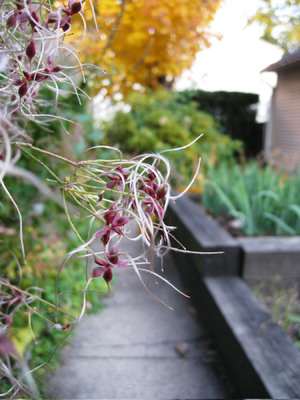- MENU
- HOME
- SEARCH
- WORLD
- MAIN
- AFRICA
- ASIA
- BALKANS
- EUROPE
- LATIN AMERICA
- MIDDLE EAST
- United Kingdom
- United States
- Argentina
- Australia
- Austria
- Benelux
- Brazil
- Canada
- China
- France
- Germany
- Greece
- Hungary
- India
- Indonesia
- Ireland
- Israel
- Italy
- Japan
- Korea
- Mexico
- New Zealand
- Pakistan
- Philippines
- Poland
- Russia
- South Africa
- Spain
- Taiwan
- Turkey
- USA
- BUSINESS
- WEALTH
- STOCKS
- TECH
- HEALTH
- LIFESTYLE
- ENTERTAINMENT
- SPORTS
- RSS
- iHaveNet.com: Home & Garden
Sean Conway

In the gardening world there are trends and fads just as there are in retail, fashion or the auto industry.
The "latest" plants or types of plant, such as grasses or flashy tropical annuals, come in and out of favor, but there is one group that has somehow missed the spotlight: vines.
Gardeners often overlook vines in part because they are not always readily available. Since they grow upward and need support when grown in containers, they require extra work for nurseries to grow them.
I owned and operated a retail nursery for many years and came to realize that many people avoided adding vines to their gardens because they didn't know where to plant them. If they didn't have an arbor, trellis or fence, they saw no reason to plant a vine.
The truth is that vines will grow on any support, including trees or shrubs, and understanding a bit about the growing habits of different vines can provide some excellent opportunities to add a whole new element to your garden.
Not all vines have tendrils, those small spring-like tentacles that wrap themselves around anything the come in contact with. Some vines, such as clematis, are what a landscape designer friend of mine calls leaners and weavers.
The Clematis genus is a very diverse group of flowering vines, available in a variety of colors from blue to purple to all shades of pink, white and cream. There are small, single-flowered forms as well as large, blousy double forms. Some clematises bloom early in the season, some in mid-season, and others late in the season, which means you can grow vines with flowers from late May until October.
One of the best ways to incorporate clematises into your garden is to plant them next to established shrubs. Clematises love to scramble through shrubs, using the branches as a support, and will reward you with a beautiful display of flowers often after their host shrub has long since finished blooming.
In my garden, I planted a clematis at the base of a large Spanish fir tree. The vine has scrambled up through the blue-needled conifer and for several months in the early summer produces an abundance of indigo blue flowers, which stand out nicely against the tree's new spring growth.
Not all vines are grown for their flowers. Some are better known for their foliage. The delicate, multi-lobed foliage of Boston ivy, or Parthenocissus tricuspidata, often goes unnoticed for most of the growing season, but in late fall when its green leaves turn a brilliant scarlet red it is hard to miss.
This fast-growing vine can quickly cover fences, walls or the sides of buildings. It supports itself by producing tiny clinging tendrils that look much like the suction-cupped feet of a gecko.
Dutchman's pipe vine, on the other hand, has foliage that is anything but delicate. It produces large, heart-shaped, dark green, leathery leaves in such abundance that during the Victorian era it was often grown up the sides of porches to provide shade and screening. The plant produces small, inconspicuous flowers that resemble Meerschaum pipes, giving the plant its common name.
Of course, leaves and flowers are not the only reason vines should be celebrated; they also provide us with some of our favorite foods and beverages.
Kiwi fruit, melons, cucumbers, squash, pumpkins, beans, peas and tomatoes are just a few foods that are produced by vines. And let's not forget beer and wine. Without the hops vine, beer wouldn't taste very good, and without grape vines ... well, lets just not think about that!
Avalable at Amazon.com:
Sean Conway's Cultivating Life: 125 Projects for Backyard Living
Ranches: Design Ideas for Renovating, Remodeling, and Building New
AUTOS | HOBBIES | EDUCATION | FAMILY | FASHION | FOOD & RECIPES | HOME DECOR | RELATIONSHIPS | PARENTING | PETS | TRAVEL | WOMEN
Growing Vines in Your Garden
Article: Copyright © Tribune Media Services